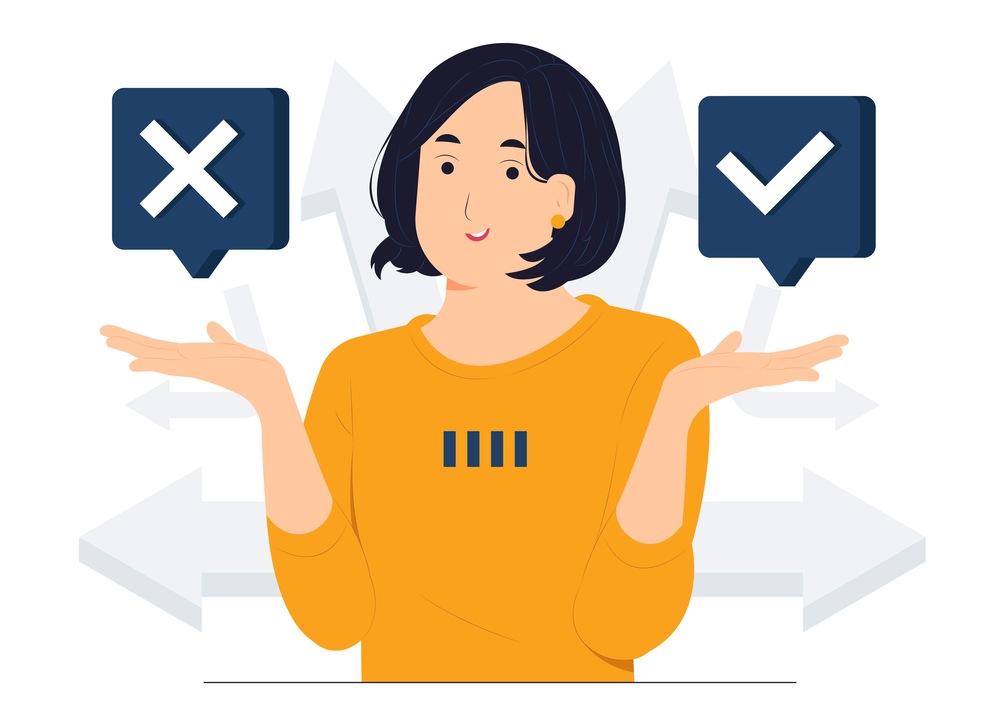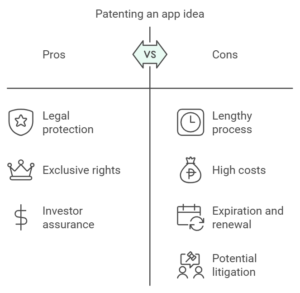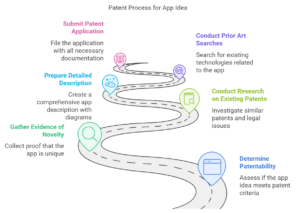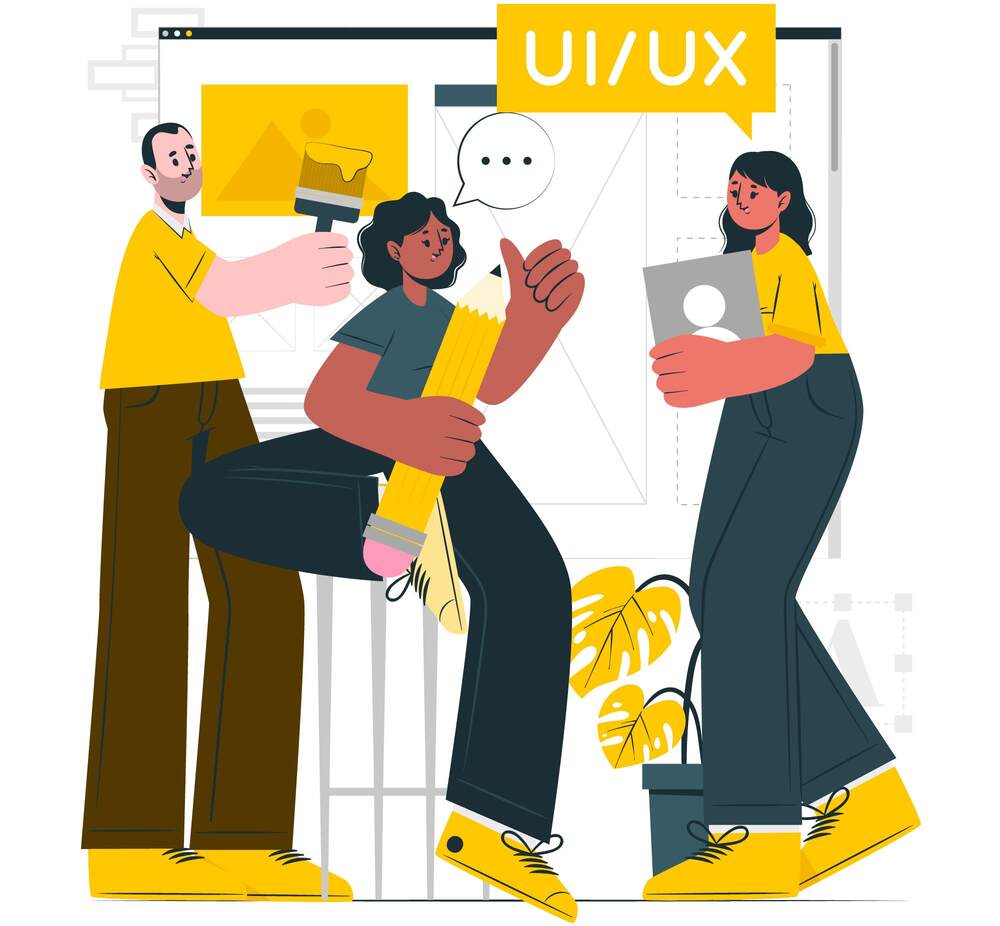
Explore the advantages and disadvantages of patenting your app idea. Learn about the benefits, like protection and monetization, as well as the drawbacks, such as cost and complexity. Whether you're an aspiring app entrepreneur or interested in intellectual property rights, this concise guide will help you make an informed decision about patenting your app idea.
As the app development industry continues to grow, many entrepreneurs and inventors are considering patenting their app ideas. Patenting an app can provide a number of benefits, from protecting your intellectual property to ensuring that you get recognition and financial rewards for your invention.
However, it is important to be aware of the potential drawbacks before making this decision. This article will examine what you need to know when it comes to patenting your app idea, including the advantages and disadvantages of doing so, the different types of patents available, and the costs associated with patenting.
Additionally, we’ll offer insight into how to go about applying for a patent as well as tips on navigating through this process.
Is Patenting an App a Good Idea? Let’s look at some Advantages and Disadvantages
Patenting an app idea is a great way to protect your intellectual property and ensure that you are the sole owner of any profits generated from your work. By patenting your app, you can also prevent others from copying or stealing your ideas.
However, when considering whether to patent your app idea, it is important to weigh the advantages and disadvantages. The primary advantage of patenting an app idea is that it provides legal protection for your creation and gives you exclusive rights over its use.
This means that no one else can make, use, or sell a product based on your patented idea without your permission. Moreover, patents can be a valuable asset to investors as it gives them assurance that their investment is protected from direct competition. On the other hand, there are some disadvantages to patenting an app idea.
First of all, the process of obtaining a patent can be both lengthy and expensive. Not only does it require filing fees for each application but also requires legal advice in order to navigate through the paperwork properly.
Furthermore, since patents expire after a certain period of time, you would need to renew your patent in order to keep up with its protection. Finally, if someone were to challenge your patent you may end up embroiled in costly litigation and could possibly lose the rights to use your own invention.

Types of Patents Available for Apps
Patenting your app idea can be a great way to protect it from competitors and ensure you receive the royalties and/or profits due for its use. There are several types of patents available for apps, depending on the nature of the invention.
The most common type is a utility patent—the broadest kind of patent that grants an inventor exclusive rights to make, use, and sell an invention in exchange for full disclosure of how it works. This kind of patent lasts up to 20 years and may be renewed if necessary.
Additionally, there are design patents, which protect the aesthetic elements of a product’s shape, pattern, or configuration. Design patents don’t last as long as utility patents—typically just 14 years—but can still provide significant protection for your invention.
Finally, there are plant patents that protect newly developed varieties of plants in exchange for sharing information regarding their growth and reproduction cycles. These kinds of patents have a duration of up to 20 years as well but only apply to certain kinds of plants such as hybrid roses or genetically modified crops.
It is important to recognize that these different kinds of patents offer varying degrees of protection over different aspects of an invention’s intellectual property rights—utility patents cover the functional aspects whereas design patent covers the aesthetic features and plant patent covers new plant species.

Costs Associated with Patenting an App Idea
When it comes to the costs associated with patenting an app idea, there are several different fees that must be taken into consideration. The first and most important cost is the filing fee, which is required to start the patent application process. This fee typically ranges from $80 to $400 per application, depending on the type of patent being applied for.
In addition, there may also be attorney’s fees for preparing and filing documents with the United States Patent and Trademark Office (USPTO). These fees can range anywhere from a few hundred dollars up to many thousands of dollars depending on the complexity of your application.
Furthermore, once an application has been accepted by the USPTO, there may still be additional legal expenses associated with defending against any potential infringers. If litigation should arise due to a perceived infringement or other claim related to your app idea or patent rights, then you will likely incur significant legal costs in order to protect your invention.
Additionally, maintenance fees must also be paid over time in order to keep your patent active and enforceable. If you decide to license your app idea or sell it outright then you may need to pay another set of related expenses such as commission fees or royalties on any revenue generated from its use. All these costs should be taken into account when deciding whether or not it is worth pursuing a patent for your app idea.
How to Apply for a Patent on Your App Idea
Applying for a patent on your app idea can be a long and complicated process, but it is one that is well worth undertaking if you want to protect your invention.
The first step in applying for a patent is determining what type of patent protection is best for the invention. The three primary types of patents are utility patents (which cover novel processes), design patents (which cover ornamental designs), and plant patents (which cover new species of plants). Depending on the nature of your app idea, it may qualify for one or more of these types.
Once you have determined which type of patent protection is most appropriate, the next step is to prepare and submit an application. This typically requires extensive research in order to ensure there are no prior inventions out there that are similar or related to yours.
It also involves drafting a detailed description of the invention’s features and functions as well as drawing up any necessary illustrations or diagrams. Most applications also require evidence that the invention works as claimed, so testing might be part of this process as well.
Once the application has been completed and submitted, it will enter an examination period in which its merits will be evaluated by a patent examiner. This can take several years depending on workloads and other factors, so patience is key during this stage.
Once the application passes examination, it will then be published by the patent office and made available for public review before being granted official approval.
Overall, applying for a patent on an app idea can be a daunting but rewarding experience with plenty of room for rewards should it succeed. As such, it’s important to understand all aspects involved before embarking upon this journey.

Tips on Navigating the Process of Obtaining a Patent on Your App Idea
When navigating the process of obtaining a patent on your app idea, there are several key tips to keep in mind. First, it’s important to make sure that your app is something that can be patented in the first place – this means it must fall under the definition of a “new and useful process, machine, manufacture, or composition of matter.”
In addition, you must have evidence to back up your claim that this app is truly novel and not just a minor variation on an existing product. Next, it’s important to do some research before filing your patent application.
This includes researching similar patents on other apps or software programs that may exist and looking into any legal challenges or issues that could potentially arise with your own application. You should also look into any design patents that may exist for certain aspects of your app; these types of patents may be granted more quickly than utility patents but they are also much narrower in scope.
You will also need to prepare a detailed description of how your app works and its core features when submitting your patent application. This should include diagrams and flowcharts as well as detailed explanations of each component’s purpose.
The goal here is to make sure that there is no confusion regarding what exactly you are attempting to patent – if there are any ambiguities then the chances of successful examination diminish significantly.
Finally, prior art searches should always be undertaken prior to filing for a patent on an app idea. These searches can help identify existing technologies related to yours which could prevent you from acquiring the desired rights over your invention.
Prior art searches can be conducted via online databases such as Google Patents as well as through physical libraries or archives depending on the type of information you are looking for. By following these tips while navigating the process of obtaining a patent on your app idea, you increase your chances of success when applying for protection over what you have created.
Remember that patience and thoroughness are two key elements when trying to secure a patent – take all necessary steps before submitting an application and don’t forget to review all documentation carefully before signing off.

Conclusion
Patenting your app idea can be a great way to protect the hard work that you have put into creating it. However, there are many things to consider before making this decision and it is important to understand all of them in order to make an informed choice.
We have tried to provide insight into what needs to be taken into account when patenting an app idea, including the advantages and disadvantages of doing so, types of patents available, costs associated with patenting, and how to go about applying for one.
With these tips in mind as well as conducting research via online databases or physical libraries/archives on relevant topics can help increase your chances of success when obtaining a patent over your app idea!
Ready to innovate and transform your business? Say hello to CodeBeavers!
If you are looking for ways to bring your product or app ideas to life? We’ve got your back. CodeBeavers has the tools and engineers you need to make your projects come alive. With CodeBeavers, you’ll be able to build faster than ever, deploy code with ease, and scale like never before. Send us your requirements now, and let’s start winning together.




